
Old collection of hexaflexagons. All up to order 10 and some more.

Hexaflexagons are paper hexagons folded from strips of equilateral triangles, that show a number of different faces when folded by opening them at the center.
Here is a scanned copy of a "catalog" that I once compiled (~1973) of all possible hexaflexagons up to order 10.
The pictures show the forms of the strips and the several Tuckerman traverses (TT) that can be obtained from each strip, as diagrams of interconnected triangles that describe how the faces appear in the hexaflexagon. The numbers adjacent to most of the TTs indicate the folding sequence in the strip that produce them. The strip is to be folded at the triangle joints indicated by the numbers, starting from the arrow, or from the left, always in the same direction, with the sequence repeated 3 times at equally spaced points of the strip. When there is more than one line, the initial folding results in a straight strip, that is to be folded as the strip of the hexaflexagons of order 6 or 9, starting from the listed joints. Once obtained a strip with 9 triangles and a tab, it is folded as the trihexaflexagon.
Note that the number of possible hexaflexagons of order N is precisely the number of possible TTs, or the number of ways where N-2 triangles can be connected by their corners, with only two triangles per connection and without forming loops.
I wrote a program named HexaFind (rewriting
an Algol program that I wrote by 1977) that finds all the possible TTs for
given orders of hexaflexagons. In the present version it can also show the
face numbers corresponding to the nodes, and, using the
"reflectocloning" method developed by David
King, show the strips that when folded result in hexaflexagons with
those state diagrams. The program runs in Windows (2019). There is also an
old DOS version (1999) here.
Example: The Tuckerman traverses of the last hexaflexagon of order 10
(#82), and the strip that produces it, front side and back side:

#82 of order 10.

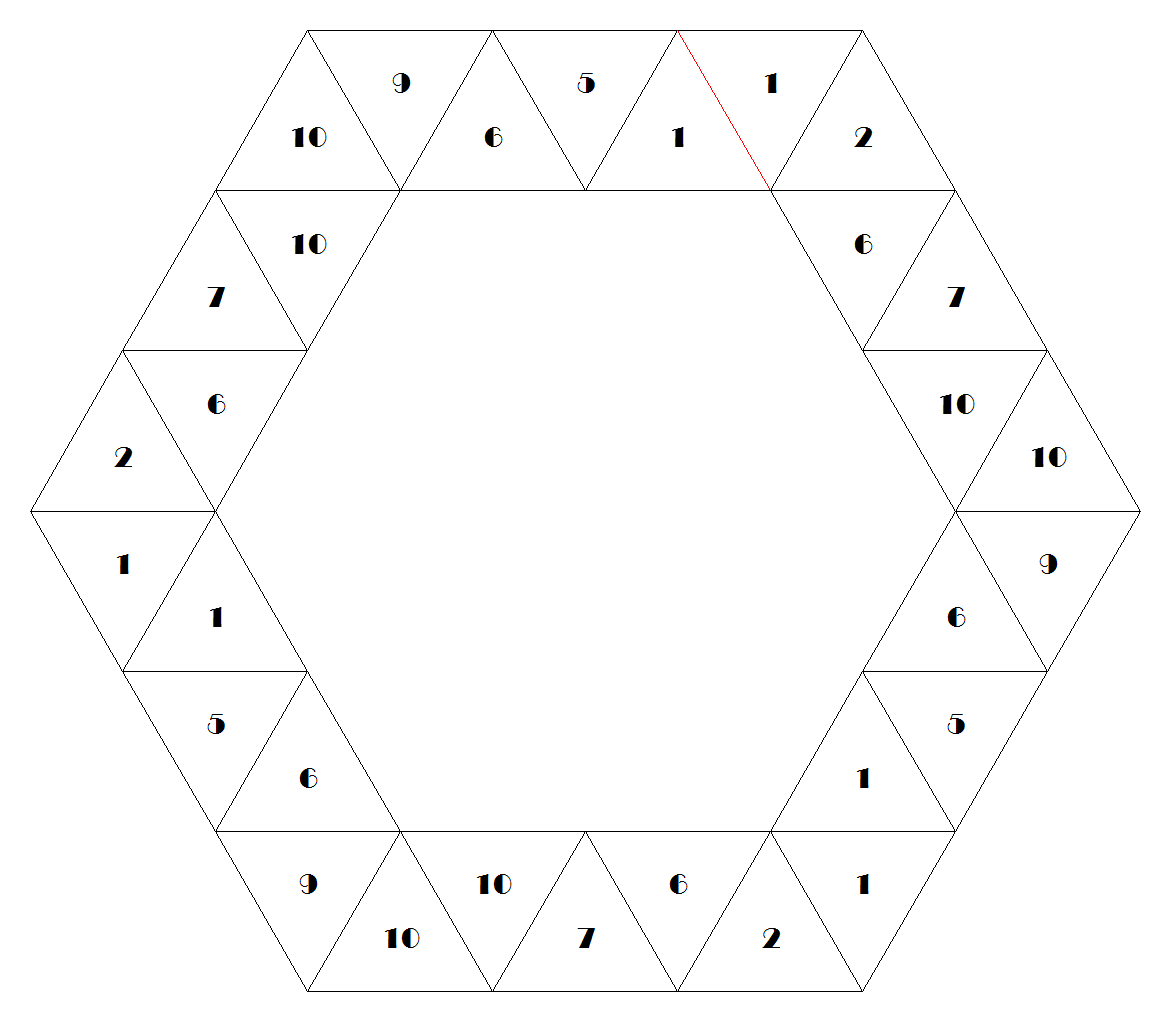

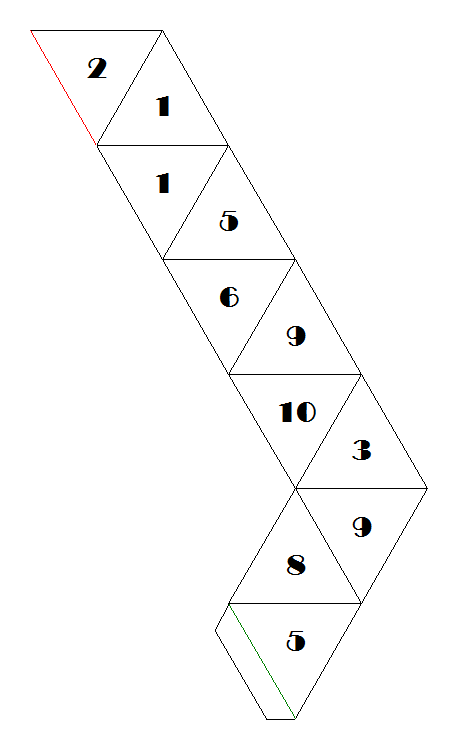
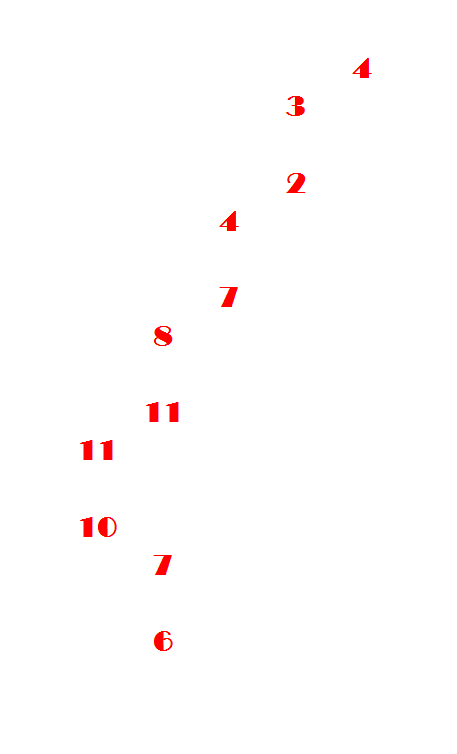
Example: The dodecahexaflexagon, with 12 faces, has 733 possibilities, and admits a straight strip with 36 triangles. This strip can be folded in 4 different ways, producing 4 different maps, shown below. A template for the four possibilities was assembled from the drawings made by the program. The two sides shall be printed well centered in both sides of the same sheet, in three copies to be joined without inversions. A portrait print requires no adjustment in most printers. A landscape printing, for larger size, requires centering in the longer direction of the sheet for correct alignment. The most well known version is #632, that is folded twice as an hexahexaflexagon. It is the only one of the four where the numbers in all the faces appear with the same color.



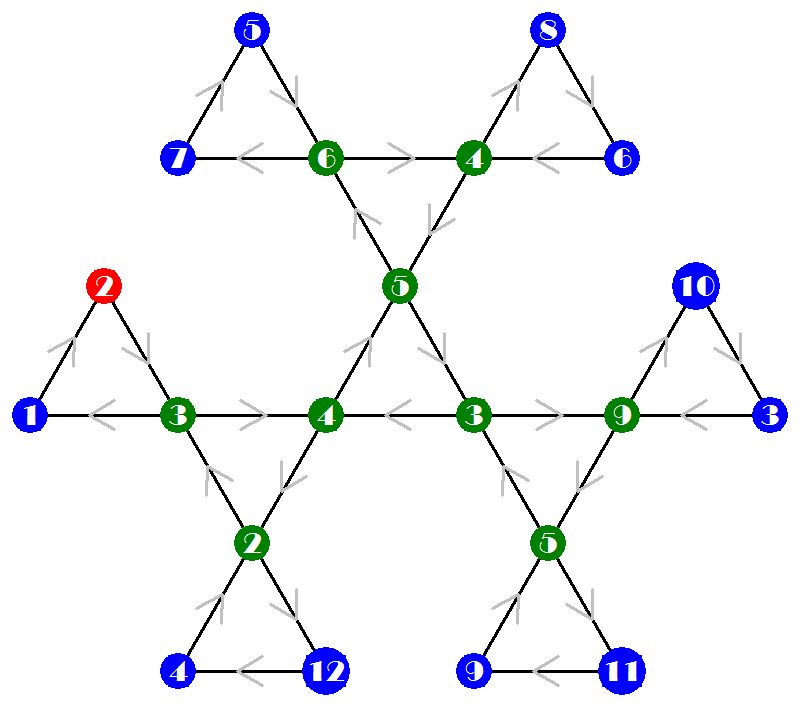
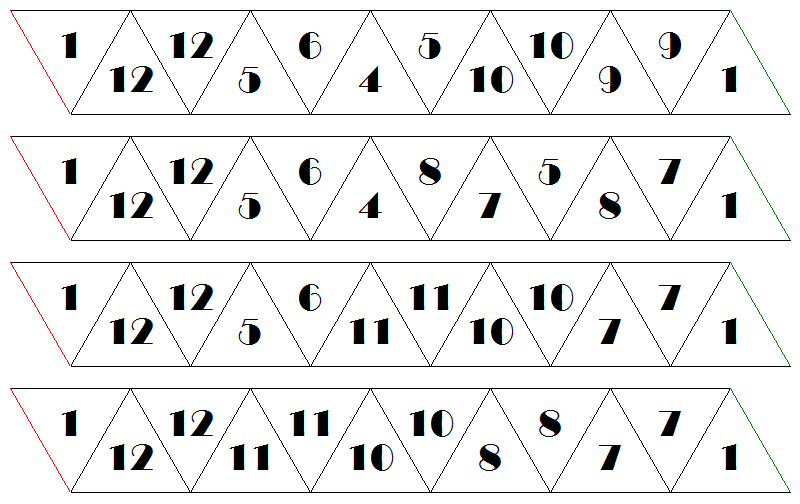
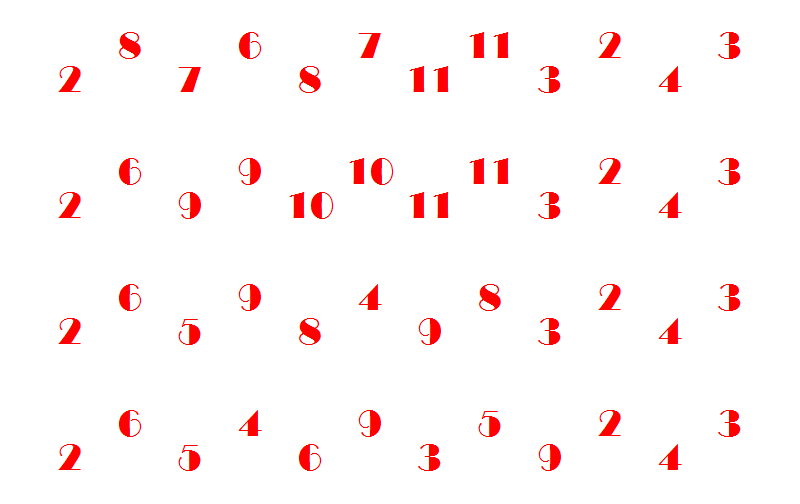
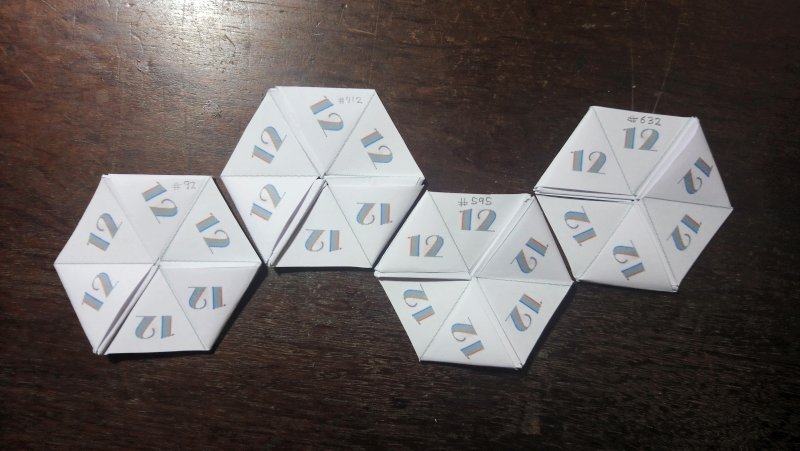
See my links about other subjects, including hexaflexagons